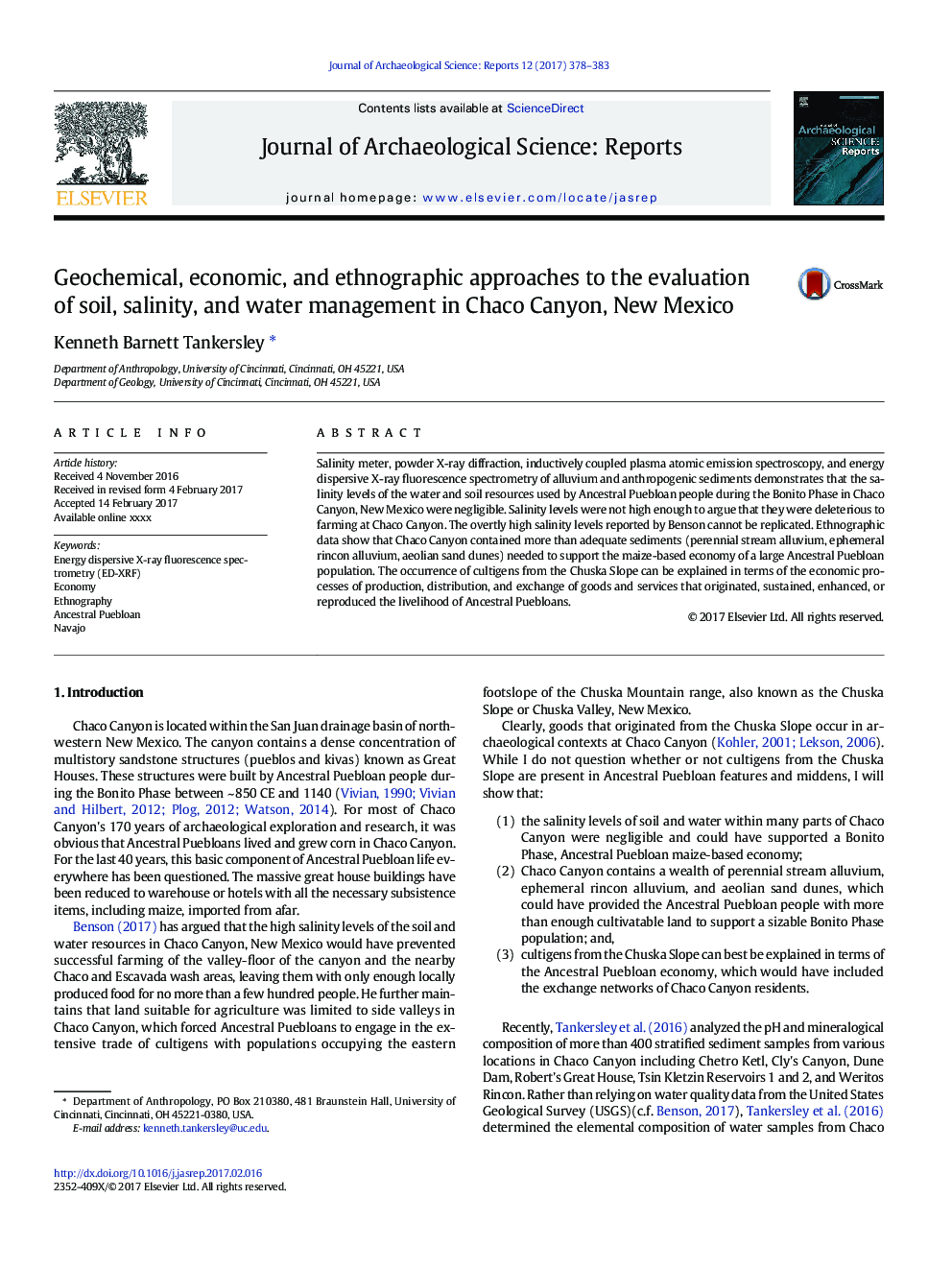| کد مقاله | کد نشریه | سال انتشار | مقاله انگلیسی | نسخه تمام متن |
|---|---|---|---|---|
| 5112538 | 1483931 | 2017 | 6 صفحه PDF | دانلود رایگان |
عنوان انگلیسی مقاله ISI
Geochemical, economic, and ethnographic approaches to the evaluation of soil, salinity, and water management in Chaco Canyon, New Mexico
ترجمه فارسی عنوان
رویکردهای ژئوشیمیایی، اقتصادی و قوم نگاری برای ارزیابی خاک، شوری و مدیریت آب در چاکو کانیون، نیومکزیکو
دانلود مقاله + سفارش ترجمه
دانلود مقاله ISI انگلیسی
رایگان برای ایرانیان
موضوعات مرتبط
علوم انسانی و اجتماعی
علوم انسانی و هنر
تاریخ
چکیده انگلیسی
Salinity meter, powder X-ray diffraction, inductively coupled plasma atomic emission spectroscopy, and energy dispersive X-ray fluorescence spectrometry of alluvium and anthropogenic sediments demonstrates that the salinity levels of the water and soil resources used by Ancestral Puebloan people during the Bonito Phase in Chaco Canyon, New Mexico were negligible. Salinity levels were not high enough to argue that they were deleterious to farming at Chaco Canyon. The overtly high salinity levels reported by Benson cannot be replicated. Ethnographic data show that Chaco Canyon contained more than adequate sediments (perennial stream alluvium, ephemeral rincon alluvium, aeolian sand dunes) needed to support the maize-based economy of a large Ancestral Puebloan population. The occurrence of cultigens from the Chuska Slope can be explained in terms of the economic processes of production, distribution, and exchange of goods and services that originated, sustained, enhanced, or reproduced the livelihood of Ancestral Puebloans.
ناشر
Database: Elsevier - ScienceDirect (ساینس دایرکت)
Journal: Journal of Archaeological Science: Reports - Volume 12, April 2017, Pages 378-383
Journal: Journal of Archaeological Science: Reports - Volume 12, April 2017, Pages 378-383
نویسندگان
Kenneth Barnett Tankersley,
